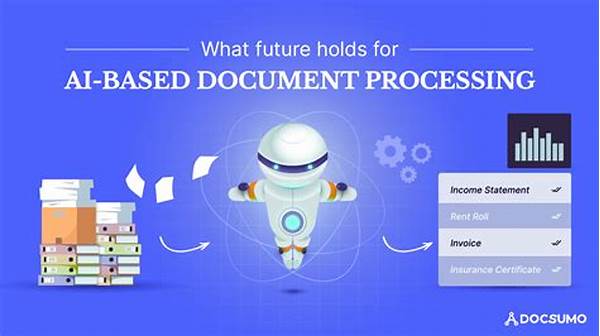In recent years, artificial intelligence (AI) has revolutionized numerous industries, and document editing is no exception. Whether you are a writer, student, business professional, or casual typist, having the assurance that your documents are accurate and polished can be a significant relief. The emergence of AI-powered document editing tools provides this assurance by improving accuracy in ways humans alone could not achieve. This article delves into how AI document editing improves accuracy, making your documents not just readable but excellent, engaging, and mistake-free.
Read More : The Remote Work Nightmare: 4 Simple Ai Tools That Bridge Communication Gaps In Global Teams!
Imagine this scenario: It’s late at night, and you’re about to submit a critical business proposal or an important college paper. You’ve gone through it countless times, but you’re still uneasy. This is where AI steps in, acting as the digital superhero, scanning through your document in a fraction of the time you would take and picking up on details you may have missed. From spotting grammatical errors to making style adjustments, AI tools are an invaluable asset in the document editing toolkit.
AI-powered tools like Grammarly, ProWritingAid, and Hemingway Editor are already making waves for their ability to not only spot errors but offer constructive feedback. These tools use machine learning algorithms trained on vast amounts of data to understand context and enhance your writing style. And yes, accuracy isn’t just about grammar and punctuation. It’s about context-sensitive suggestions, readability improvements, and even tone adjustments. By the end of your AI-editing journey, your document is clear, compelling, and on point, increasing your confidence and your document’s impact.
The Technology Behind Improved Accuracy
The magic behind how AI document editing improves accuracy lies in its sophisticated technology. AI systems leverage natural language processing (NLP) to analyze text, identify patterns, and suggest corrections. NLP, a subset of AI, enables machines to comprehend, interpret, and respond to human language, making the editing process precise and reliable.
As AI development continues, we expect even greater accuracy and more nuanced feedback. Whether you’re crafting a novel, drafting an email, or preparing an academic paper, the peace of mind that comes with knowing your document is polished to perfection is priceless. In today’s fast-paced digital world, accuracy is king, and AI provides the tools to maintain it effortlessly.
—
Introduction to AI Document Editing
Artificial Intelligence, once a concept confined to science fiction, has become an integral part of our everyday lives, from virtual assistants like Siri and Alexa to innovative document editing tools that promise to enhance the accuracy of our work. Everywhere you look, AI is making tasks easier, faster, and more efficient. In the realm of document editing, AI not only ensures your work is free from glaring errors but also fine-tunes your writing to align with the highest standards of linguistic precision.
The digital age demands rapid communication and pristine documentation. According to studies, businesses spend countless hours each year correcting writing errors, a process that burns both time and money. But what if technology could take over this labor-intensive task? That’s where AI document editing tools come into play, offering not only grammatical corrections but smart suggestions that improve content clarity and engagement.
Imagine sitting in an office, locked in a heated email exchange, or drafting a report with your boss’s disappointed gaze looming over your shoulder. AI tools provide the confidence to press “send” without second-guessing your choices. From the basic spell-check, we have shifted to AI-driven software that offers complex text analysis and language optimization, contributing significantly to how AI document editing improves accuracy.
There’s a broad spectrum of AI editing technologies available, ranging from simple grammar checkers to comprehensive editing assistants. These tools adapt to your writing style, learning over time and offering personalized suggestions that cater to your unique voice. It’s not just about catching errors; it’s about enhancing your writing in a way that’s sophisticated, efficient, and nuanced.
Understanding AI Capabilities
Modern AI applications use deep learning techniques to process and understand human languages, allowing them to detect mistakes that previously would have gone unnoticed. These capabilities empower users to produce sharper and more precise documents. Let’s delve deeper into how these AI capabilities contribute to improved document accuracy.
Transforming Document Editing with AI
AI’s prowess lies in its ability to learn and adapt. When applied to document editing, AI systems leverage vast datasets and algorithms to identify and correct errors. They offer suggestions that not only fix grammatical errors but also improve overall document coherence. This transformation in document editing is one of the simplest yet effective ways how AI document editing improves accuracy, ensuring every document is a masterpiece polished to perfection.
—
Six Topics Related to How AI Document Editing Improves Accuracy
—
Exploring the Benefits of AI Document Editing
Welcome to a world where AI transforms the way we write and edit. Back in the day, editing was a task dreaded by many, requiring keen eyes and immense patience. Today, AI-powered editing tools have turned this once laborious task into a quick, efficient, and virtually painless process. The result? Documents that aren’t just accurate but engaging and impactful. But you might wonder, what exactly contributes to this remarkable transformation? The answer lies in how AI document editing improves accuracy.
AI editing tools are designed to make life simpler. They analyze documents with an unmatched level of precision, offering corrections for everything from basic grammar mistakes to nuanced syntactic structures. Imagine having an editor who not only identifies misplaced commas but understands the contextual integrity of your entire paragraph. This is the level of accuracy AI brings to the table, offering a lifeline to those under tight deadlines or suffering writer’s block.
These technologies are especially revolutionary in professional environments where clear communication is crucial but often overrun by time constraints. AI tools like Grammarly Business help maintain corporate language standards, ensuring that all communications are precise and professional. More than just a proofreading ally, AI editing tools are a strategic asset to any business looking to enhance its brand with crisp, authoritative writing.
Moreover, the more you interact with these tools, the more they learn your personal writing style. This personalization guarantees that over time, the suggestions align closely with your unique voice, enhancing authenticity and personal connection in your writing. For anyone who values both style and substance, AI document editors are the perfect partners in craft.
The Role of AI in Enhancing Document Quality
AI’s role in enhancing document quality extends beyond mere error detection. Consider the synergy between human creativity and AI precision—a union that produces superior written content. AI editors assist by streamlining the editing process, offering more time for the creative aspects of your work.
Future Trends in AI Document Editing
The future of document editing is bright and heavily influenced by AI innovation. As technology advances, expect more intuitive, user-friendly, and context-aware AI editors to enter the scene. These future developments promise to refine and expand on how AI document editing improves accuracy, offering new and unprecedented levels of textual perfection.
—
Seven Key Insights Into How AI Document Editing Improves Accuracy
—
A Deep Dive into AI Document Editing
The concept of artificial intelligence, once a dazzling element of fictional universes, is now a tangible and powerful force reshaping industries. One area that stands to benefit significantly from AI’s capabilities is document editing. Whether for professional, academic, or personal use, having an accurate and polished document is essential. So, how does AI contribute to this accuracy? This exploration uncovers how AI document editing improves accuracy, offering an array of benefits to its users.
In our fast-evolving digital landscape, document editing has become more than just correcting grammar. It involves ensuring that the text is coherent, contextually appropriate, and aligned with the intended tone and audience. AI editors have stepped up to take this challenge head-on, transforming editing into a seamless, efficient process. This innovation ensures that the final output is not just error-free but also articulate and engaging.
AI document editing tools utilize sophisticated algorithms that mimic human cognitive functions. They can parse enormous datasets and extract meaningful patterns, enabling them to analyze text with remarkable accuracy. This ensures even the subtlest linguistic errors are caught, enhancing the overall quality of communication. How AI document editing improves accuracy is thus defined by its ability to integrate deep learning models with linguistic precision.
But AI editing tools go beyond mere mechanics—they revolutionize the author’s interaction with the text. By offering smart suggestions and enhanced readability features, they support the writer’s journey, nurturing better writing habits over time. Imagine receiving editorial feedback that helps you understand your strengths and areas for improvement, a tutor that never tires and continually inspires.
The Future of AI Document Editing
The future is indeed promising with AI-driven innovation in document editing. As technology advances, AI tools are becoming increasingly intuitive and adept at handling more complex writing tasks. With each passing day, these tools are learning, evolving, and enhancing the scope of how AI document editing improves accuracy, heralding an era of flawless documentation.
The Intersection of Creativity and Precision
The intersection of creativity and precision is where AI excels, merging the analytic prowess of technology with the creative flair of human expression. This symbiosis guarantees results that are not only accurate but also engaging and stylistically rich, offering a brighter future where AI and humanity co-write the next chapters of literary and professional success.
In conclusion, AI’s contribution to document editing is unparalleled, offering accuracy, efficiency, and an improved writing experience across various platforms. Embrace this technology, and let it transform how you create and communicate, ensuring every document is as polished and powerful as your ideas.



